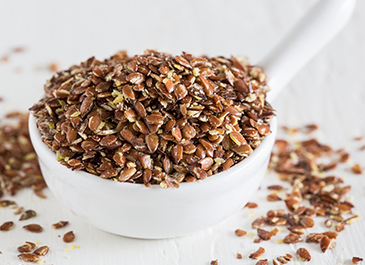As far as nutrition topics go, fibre is a tad unappreciated. For starters, talk of fibre leads to talk of healthy bowels…the mere thought of which makes a few of us blush. The average Canadian consumes about 14 grams of fibre a day, far less than the recommended 25 grams for women and 38 grams for men. Also, when our diets consist mainly of fast food or processed foods our bodies are missing out on all of the benefits that fibre-containing foods have to offer. Take a look at some commonly asked questions regarding our misunderstood friend, fibre.
What is the difference between soluble and insoluble fibre?
Soluble fibre is like the “cement” that holds plant cell walls together; it becomes gel-like in our intestines and moves quickly through our digestive tract. In our colon, healthy bacteria partially digest the fibre and produce short chain fatty acids (SCFA), which may help lower cholesterol and inhibit GI tumours. Soluble fibre is found in oats, barley, beans and fruit such as berries, apples and citrus. Insoluble fibre is what we consider “roughage” that forms the plant cell wall. In our digestive system it slows things down, keeps you regular and adds weight to the stool. Don’t blush…we will find out why this is important later. Insoluble fibre can be found in whole wheat, seeds, leafy vegetables and vegetables such as carrots.
Why is fibre so important?
Fibre is a powerful ally in the fight against heart disease. It promotes the production of SCFA which helps to lower cholesteral in the blood. Fibre also binds cholesterol in the GI tract and carries it out of the body. Fibre also supports healthy blood sugar levels by slowing down stomach emptying and the rate that sugars hit the blood stream. A high-fibre diet helps maintain a healthy gut by promoting the growth of healthy bacteria and reducing risk of hemorrhoids and diverticular disease. As fibre moves through the digestive tract, it binds water which increases stool weight. The result: it takes less time for waste to move through our system, reducing exposure to the toxins that have been bound by fibre.
I am not a bran fan… how can I get more fibre in my diet?
Smart swaps make it easy to add fibre to your diet. Swapping the usual 100% whole wheat bread for sprouted grain bread adds an extra 3 grams of fibre to our diet. Making a sandwich with sprouted grain breads adds a whopping 10 grams of fibre. Mix in 1/3 cup (12 g) of all bran buds or 2 tbsp (4.5 g) of ground flax to your cereal for a fibre boost. Other simple ways to fill up on fibre include cooking up whole wheat pasta instead of white pasta or adding extra chickpeas to salads, soups and casseroles. Need a few smart snack ideas? Pears contain 5 grams of fibre, a half cup of Edamame contains 4.3 grams and a half cup of prunes contains 7 grams.
Have a nutrition question? Email nutrition@choicesmarkets.com.

